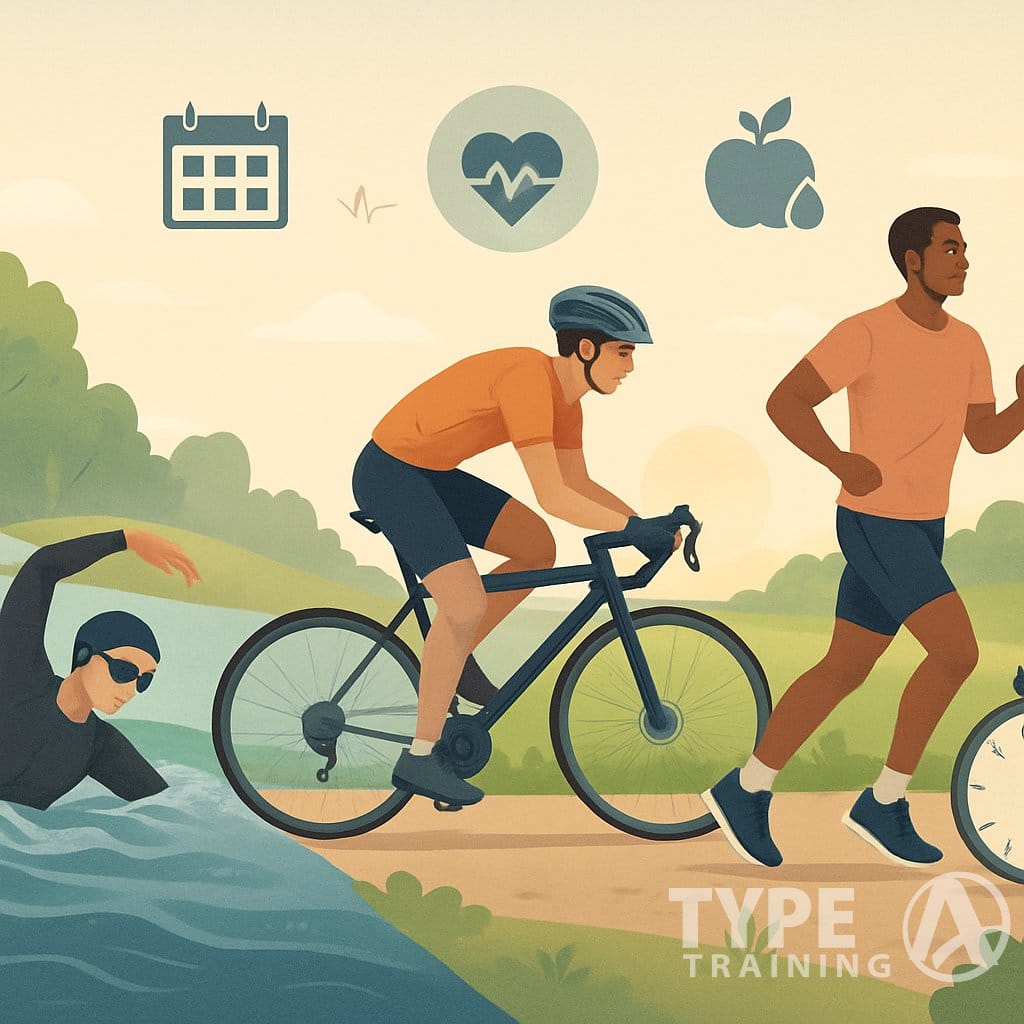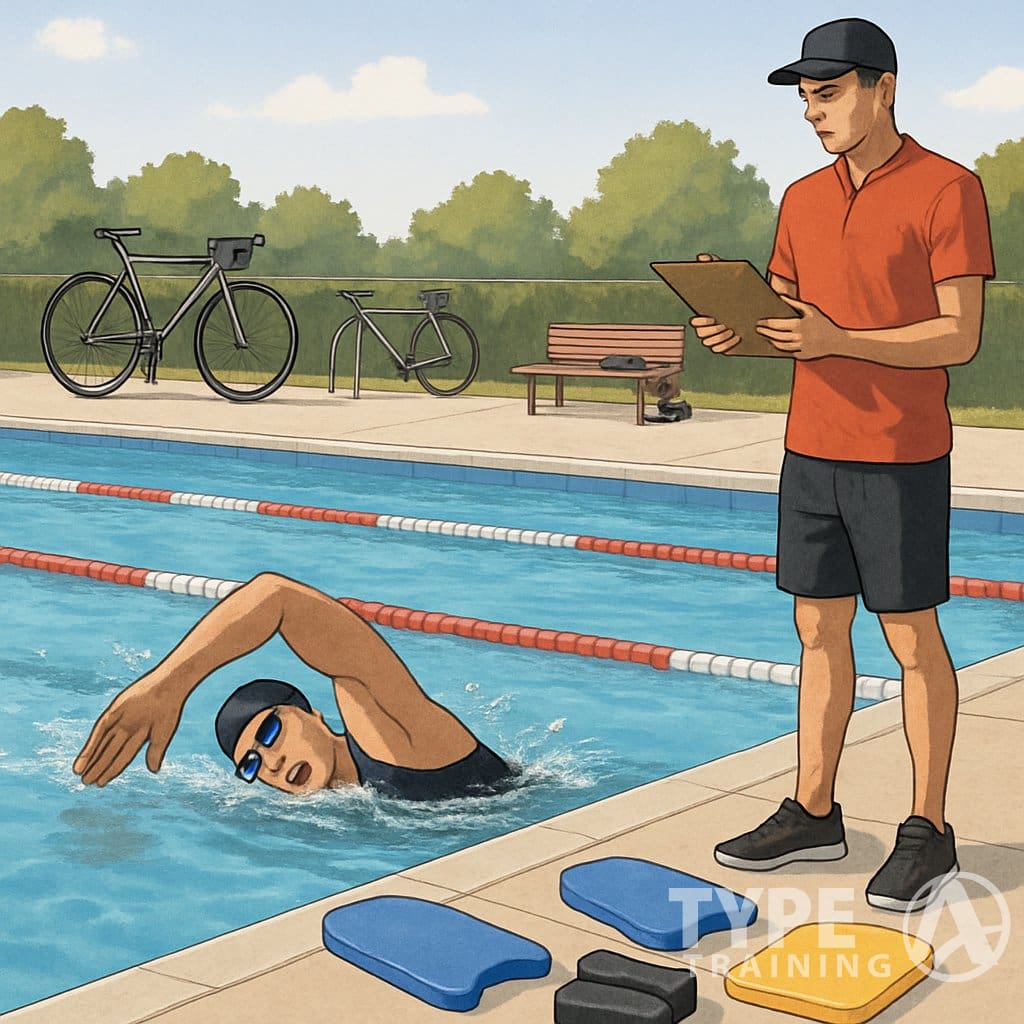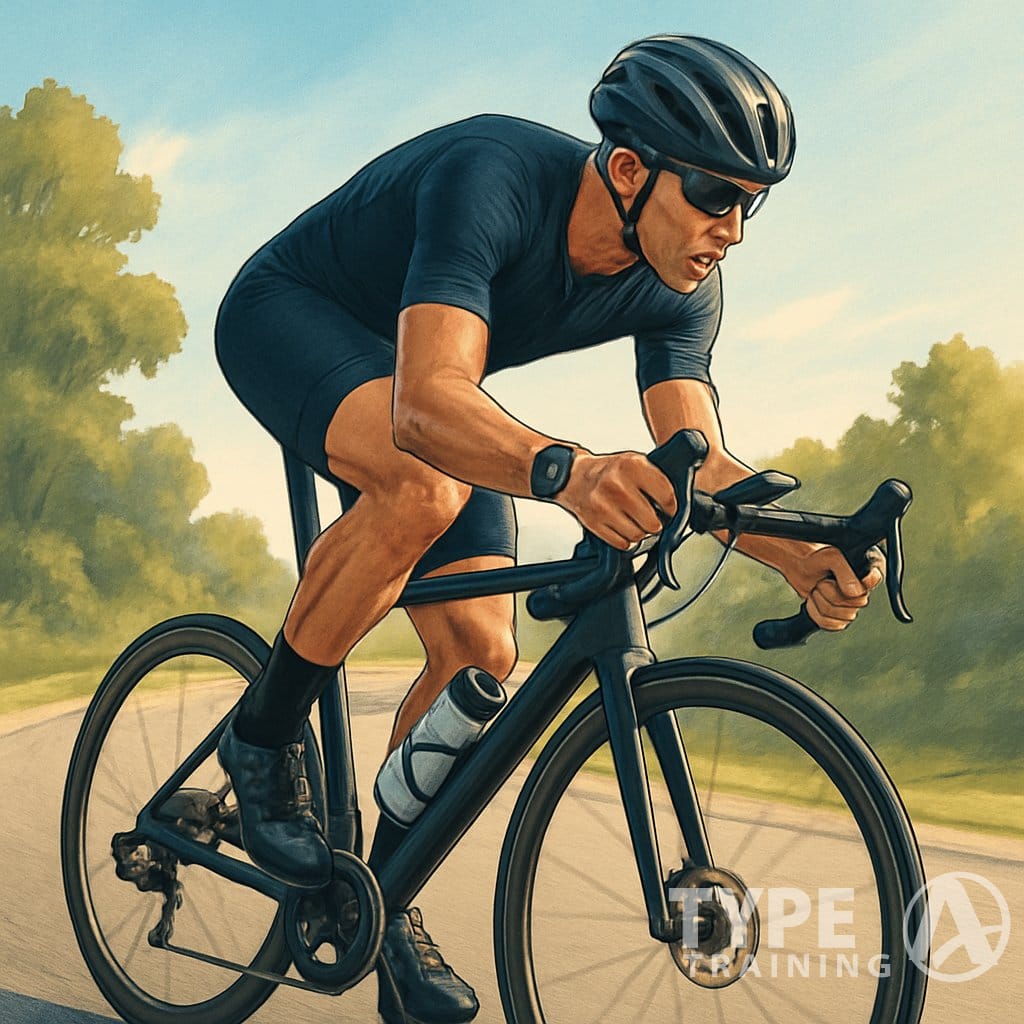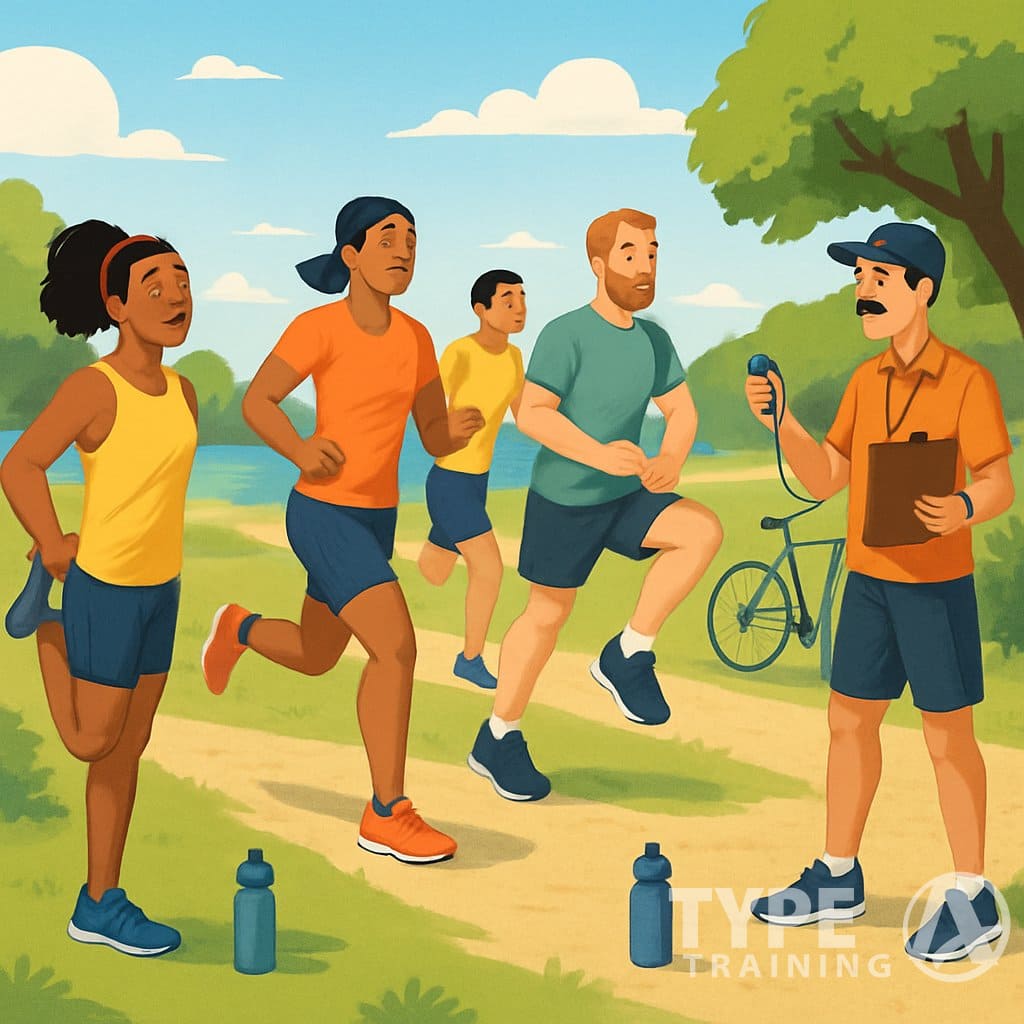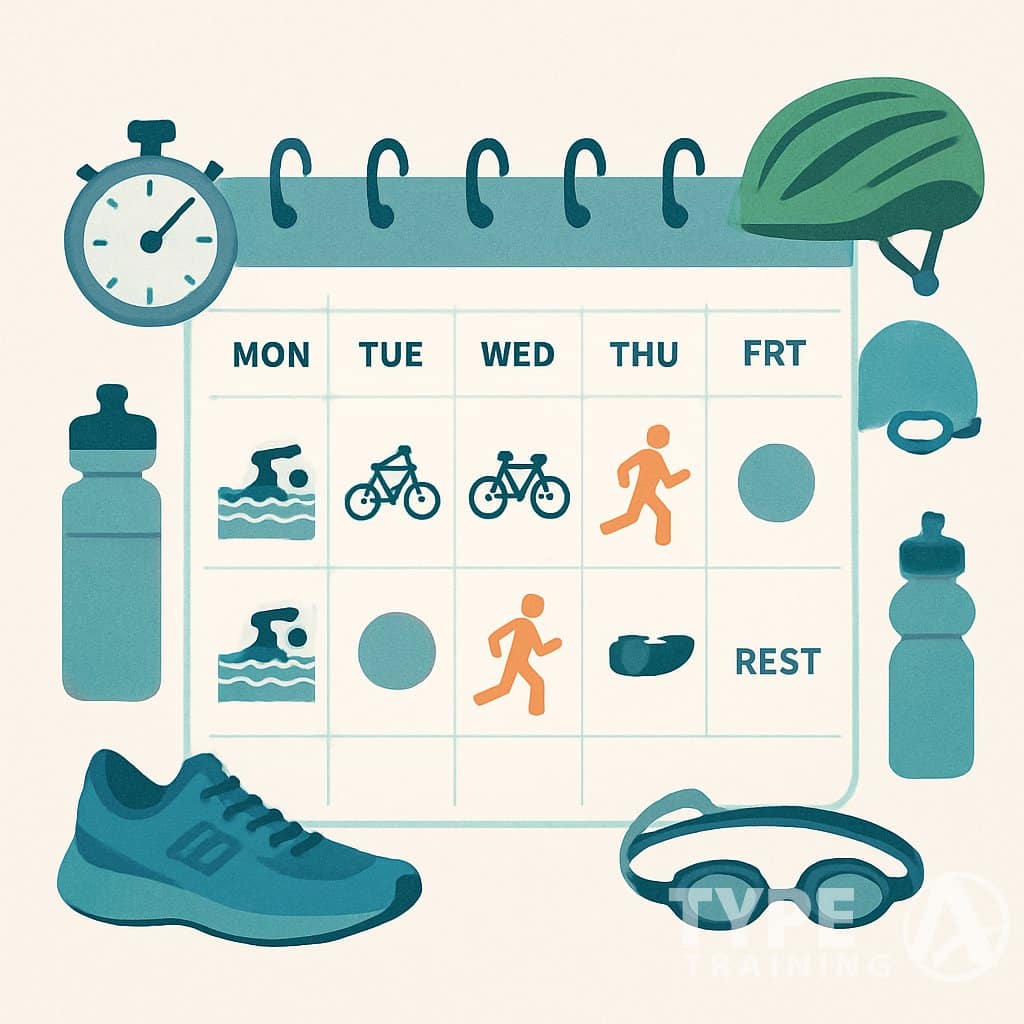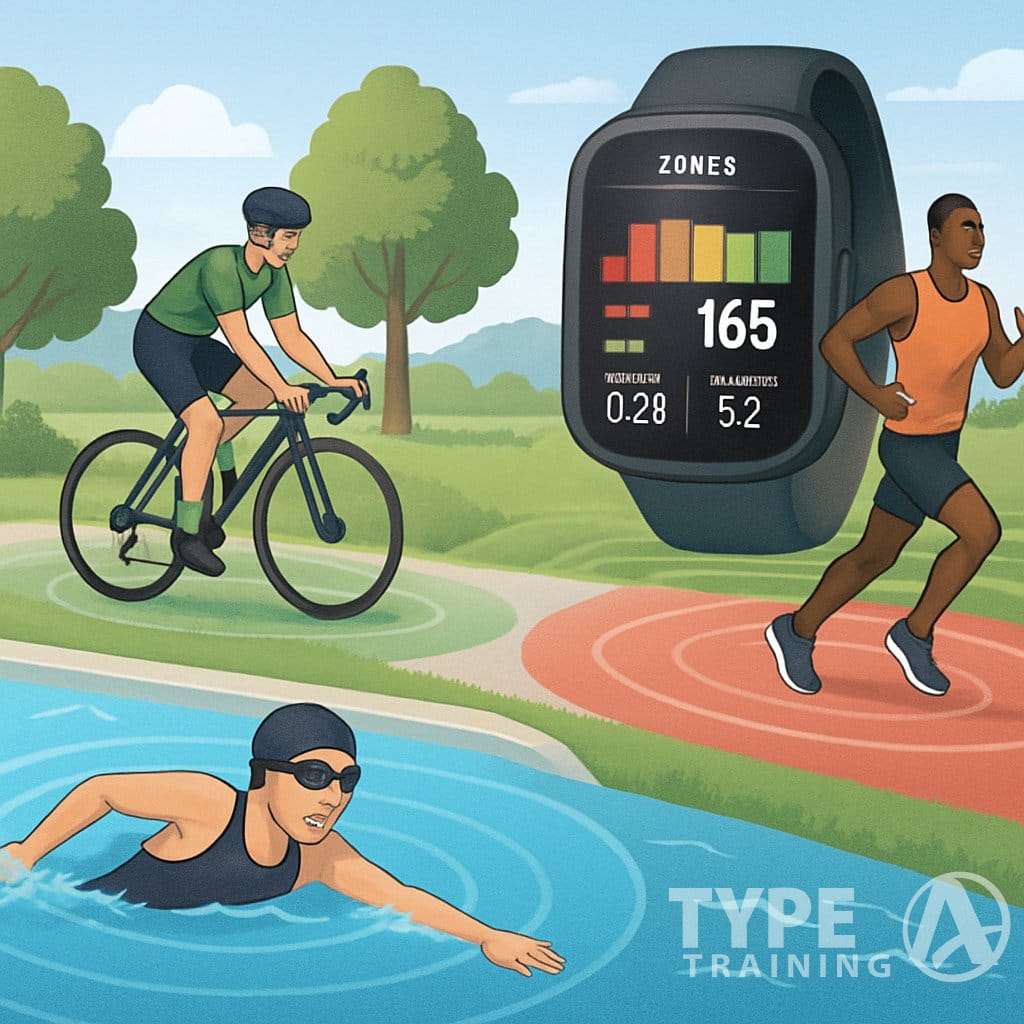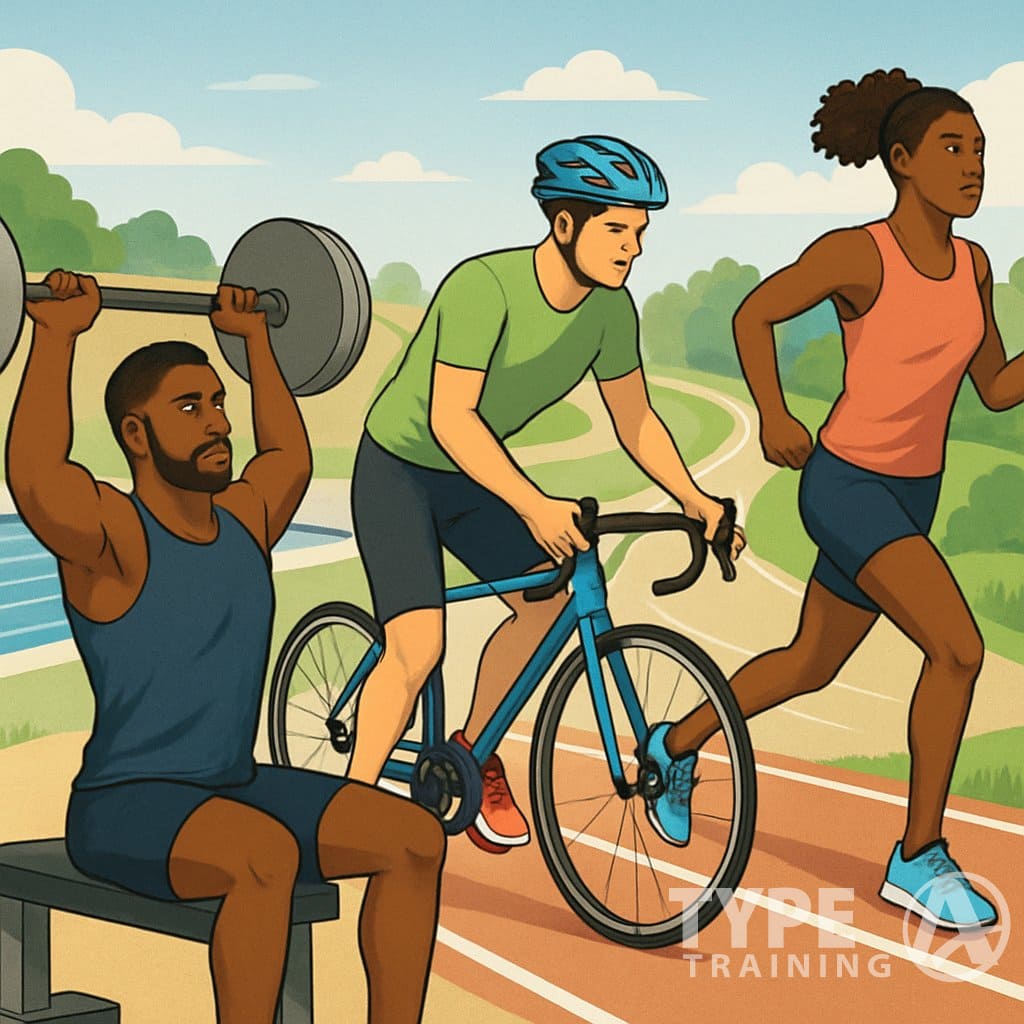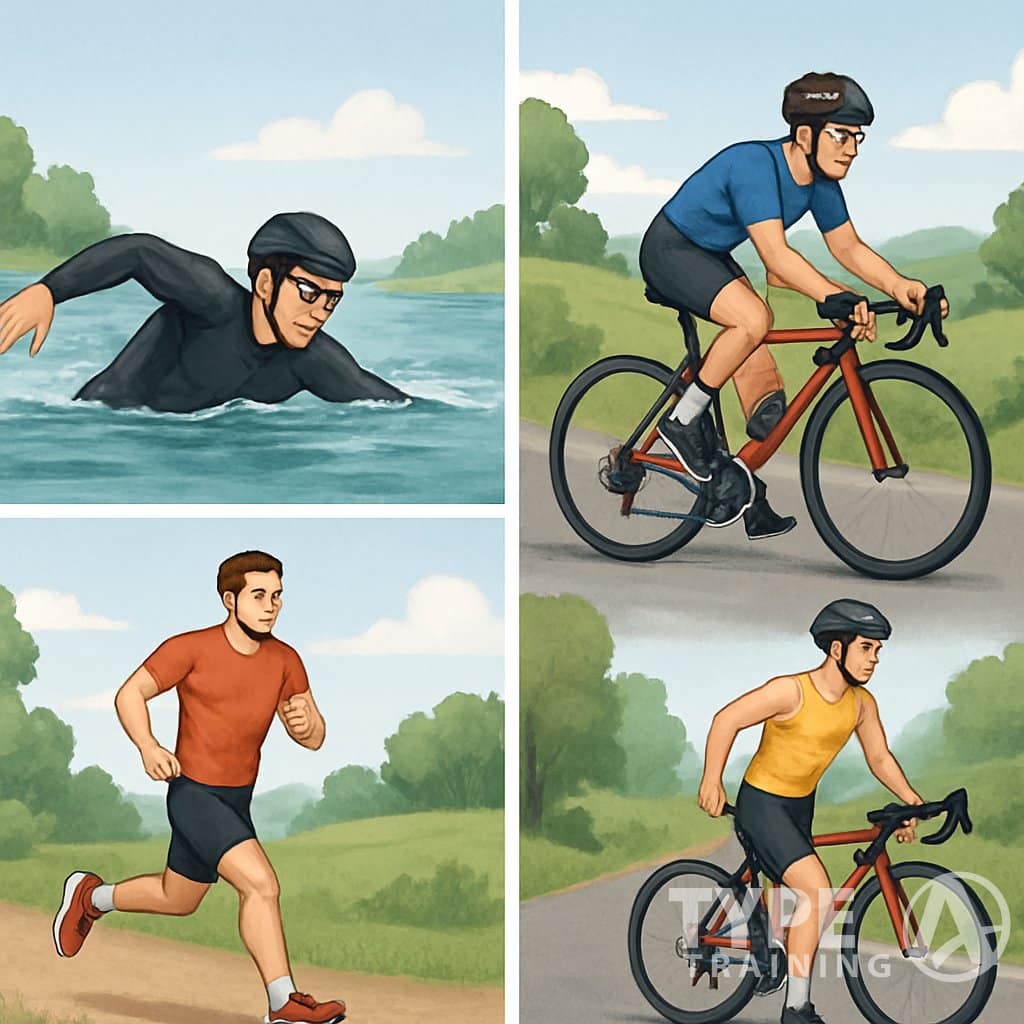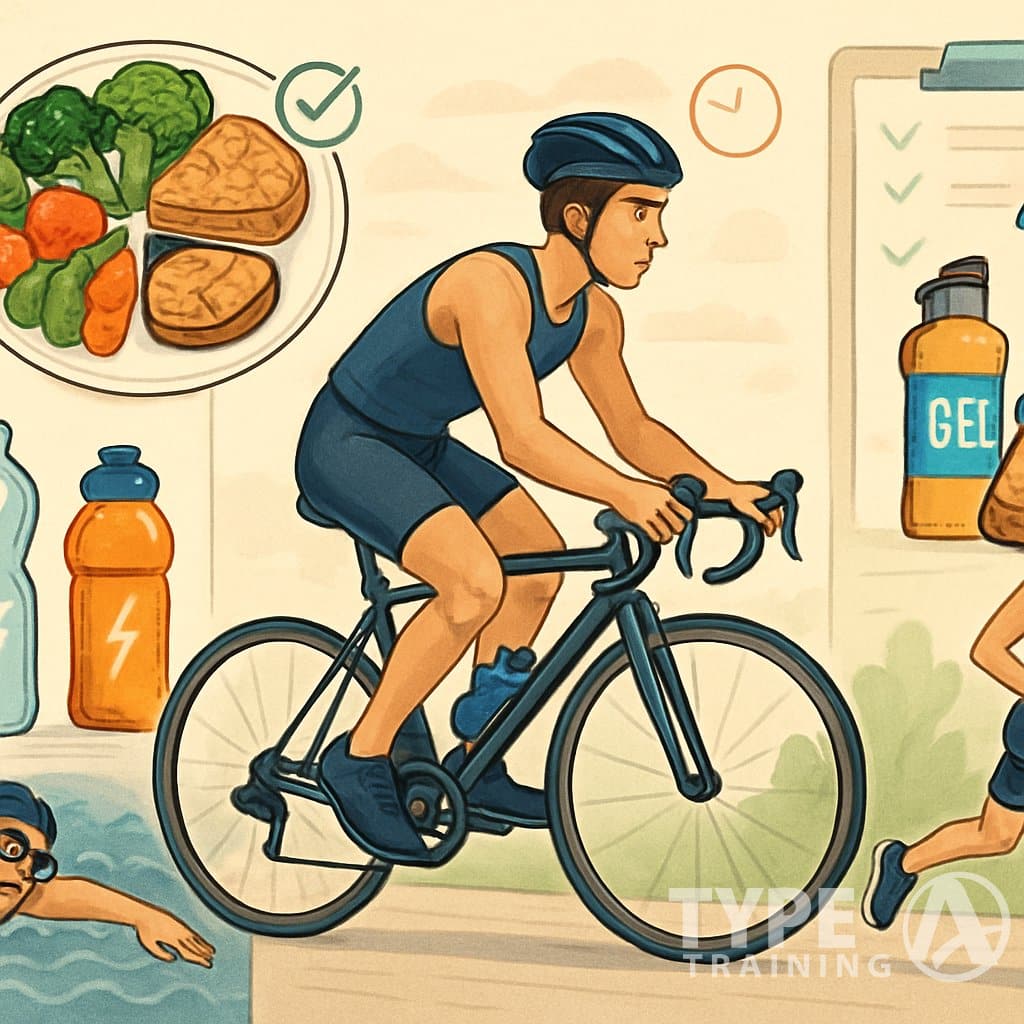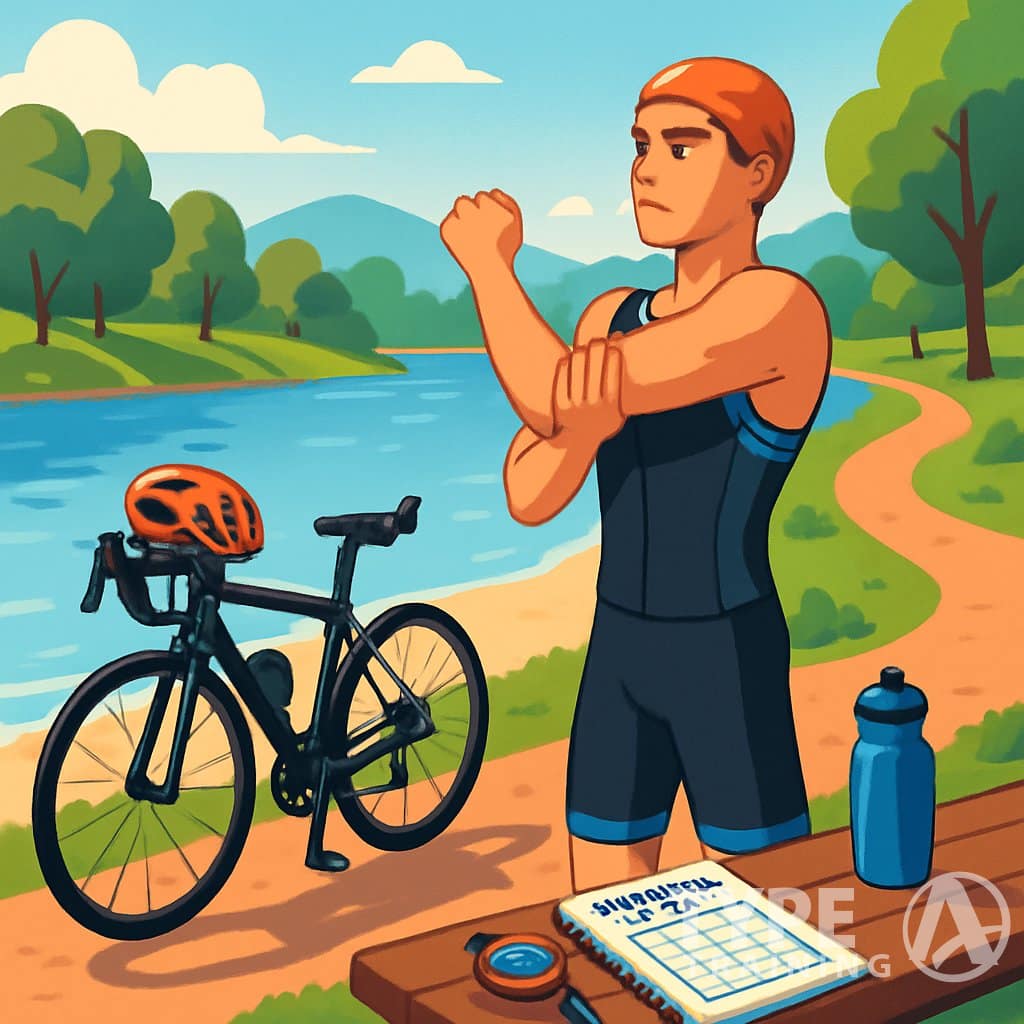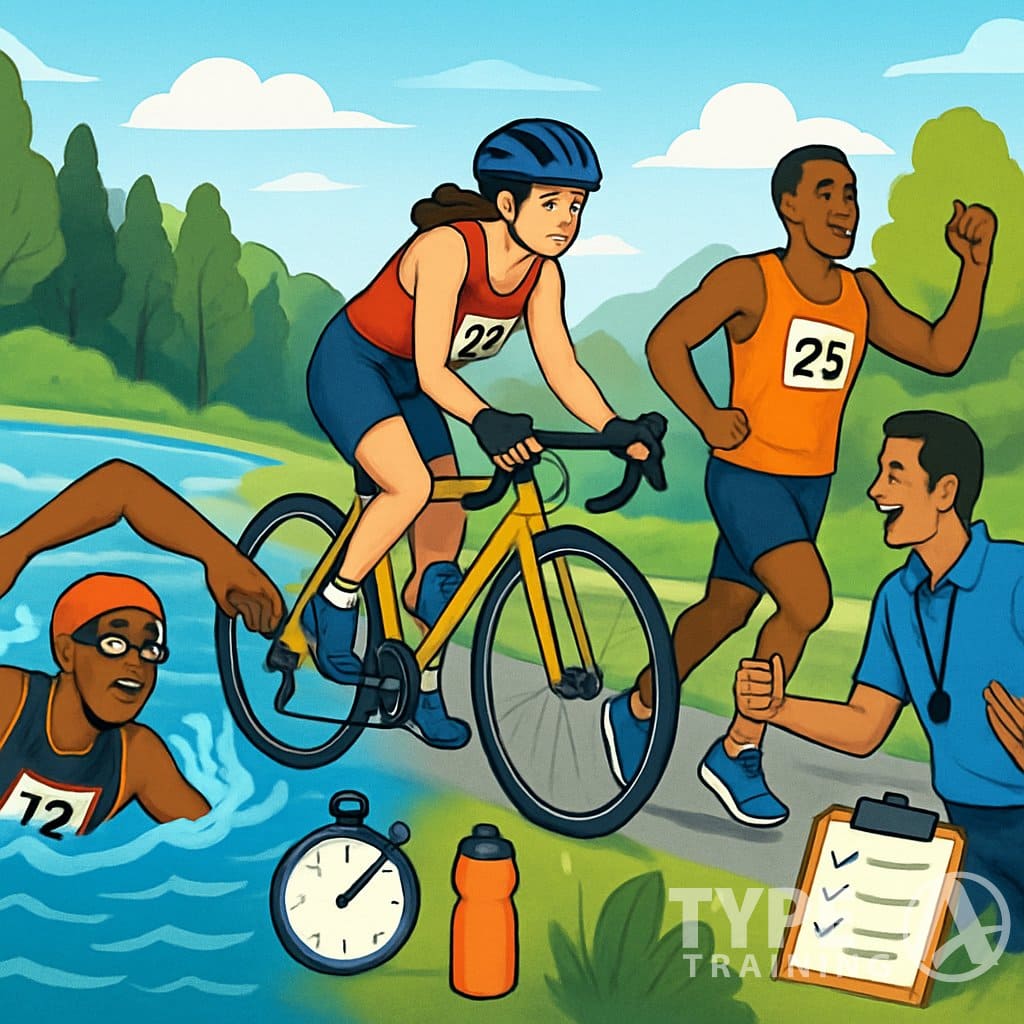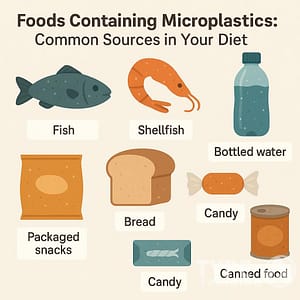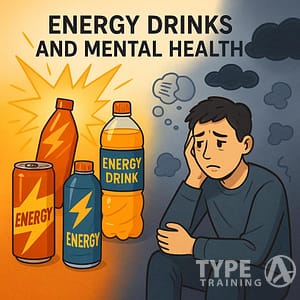Thinking about a sprint triathlon can feel intimidating at first. But with the right training, even total beginners can cross that finish line.
A sprint triathlon usually means a 750m swim, a 20km bike ride, and a 5km run. Those distances are surprisingly doable with some solid preparation.
An 8-week beginner sprint triathlon training plan gives you enough time to build endurance and skills in all three disciplines while preventing injury and burnout.
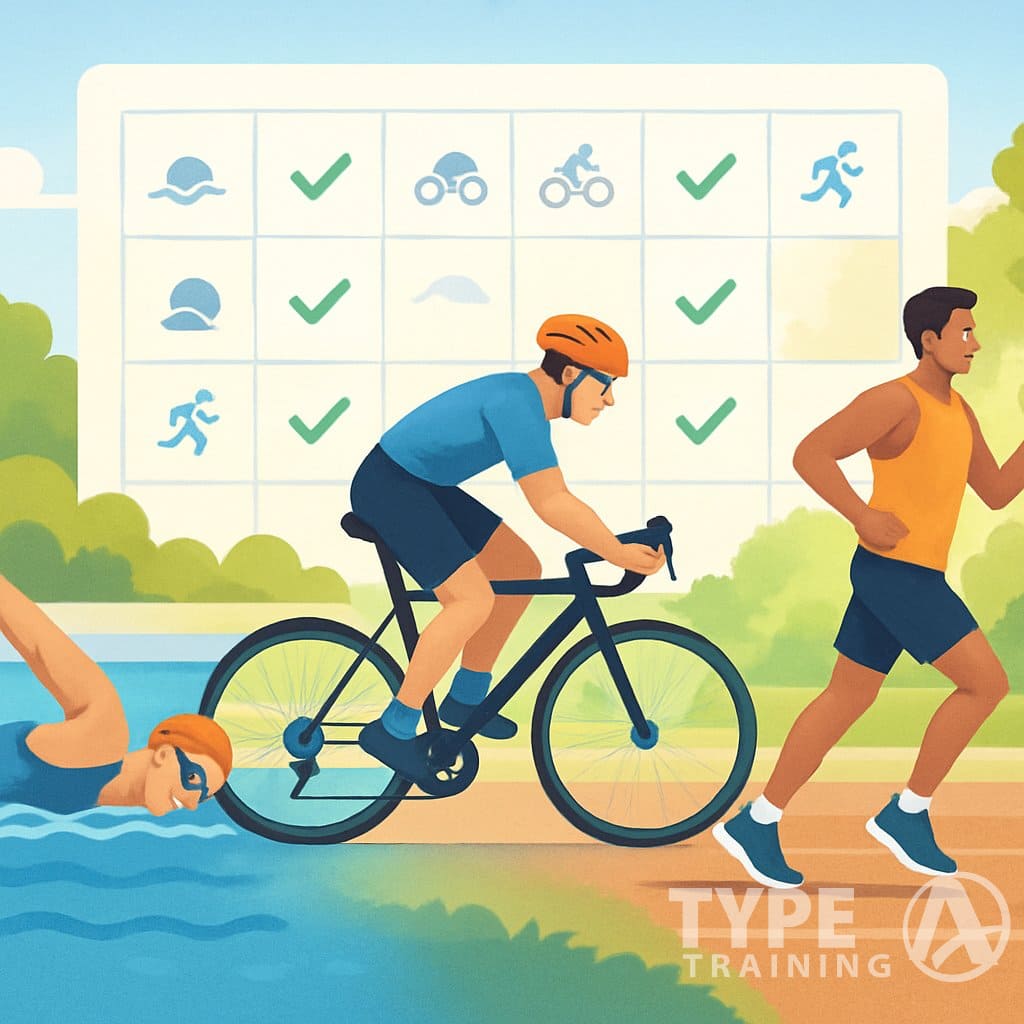
Popular posts:
Getting started in triathlon takes consistent, balanced training across swimming, cycling, and running. Most beginner training plans suggest 4-5 workouts per week, with at least one session for each sport.
You don’t have to be a superstar in all three. Plenty of new triathletes have a strong suit and just aim for competence in the others.
The main goal is to build enough stamina to finish each part without stopping, one after the other.
Before diving into a sprint triathlon program, make sure you can swim for 15 minutes (with breaks), bike for 30 minutes, and run for 15 minutes. You don’t need to do all three in a row yet.
Your training will gradually ramp up these abilities and introduce “brick” workouts, which mix two sports in a single session to help your body handle those tough transitions on race day.
Key Takeaways
- Sprint triathlon training builds well-rounded fitness through swimming, cycling, and running workouts that prevent muscle imbalances.
- Most beginners need 8-12 weeks of structured training with 4-5 sessions weekly and dedicated rest days for recovery.
- You should be able to swim 800 meters, bike for 30 minutes, and run for 15 minutes before starting your training program.
Understanding the Sprint Triathlon
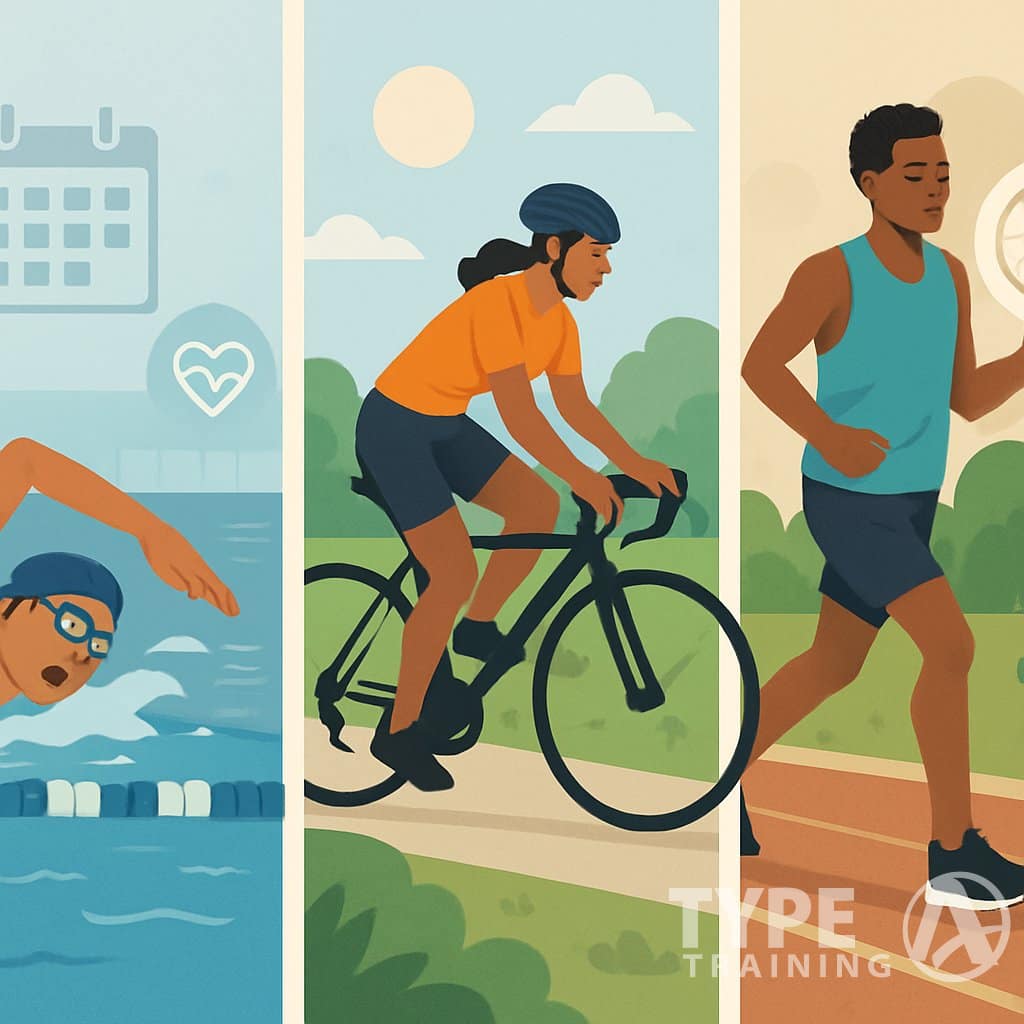
Sprint triathlons make a great first step for beginners. The distances are manageable, and the format is pretty accessible.
This multisport event combines swimming, cycling, and running. You’ll test your endurance in a way that’s tough, but not out of reach for newcomers.
Sprint Triathlon Distances
The standard sprint triathlon has a 750-meter swim (about 0.47 miles), a 20-kilometer bike ride (12.4 miles), and a 5-kilometer run (3.1 miles).
Some races offer “super sprint” options: 400-meter swim, 10-kilometer bike, and 2.5-kilometer run. Perfect for dipping your toes in.
The swim usually happens in a pool or open water like a lake or ocean. The bike leg is on roads or bike paths, and the run is mostly on pavement.
Race Format and Expectations
Sprint triathlons follow a set order: swim, bike, run. You’ll pass through transition areas between each sport to swap gear and catch your breath.
Most beginners finish a sprint triathlon in 60-90 minutes. Some experienced folks can get it done in under an hour, but who’s counting?
The vibe at these events is usually super supportive. Race organizers set up water stations, course marshals, and clear signs so you won’t get lost on the race distance.
You’ll probably get grouped by age or experience. For your first time, just focus on finishing, not beating the crowd.
Key Elements of a Sprint Triathlon Training Plan
A solid triathlon plan brings together structured phases, balanced weekly workouts, and the right gear. All of these help you build fitness and avoid injuries or burnout.
Training Phases
Sprint triathlon training moves through a few key phases. The base phase comes first and lasts 3-4 weeks, focusing on aerobic fitness and basic strength.
During this time, stick to regular, low-intensity workouts. You’re just laying the groundwork here.
Next is the build phase. Over 3-4 weeks, you’ll up the volume and intensity, adding in some intervals and longer sessions to boost speed and stamina.
The last 1-2 weeks before your race is the prep phase. You’ll cut back on training (a “taper”) but keep a bit of intensity to stay sharp. This helps your muscles recover while you hold onto your gains.
Weekly Structure and Training Days
Good sprint triathlon plans juggle swimming, biking, running, and rest. Most beginner plans call for 4-6 training days and 1-2 full rest days per week.
Your week might look like this:
- 1-2 swim sessions (30-45 minutes each)
- 2-3 bike workouts (30-60 minutes each)
- 2 run sessions (20-40 minutes each)
- 1-2 complete rest days
- Optional: 1-2 strength sessions (20-30 minutes)
Some plans use “double days” where you do two sports in one day. You don’t have to do them back-to-back—sometimes it’s better to space them out.
Always start easy to warm up, then gradually ramp up intensity. It really helps with injury prevention and just makes workouts feel smoother.
Essential Equipment
The right gear can make training much more enjoyable, but you don’t need to break the bank. For swimming, grab a comfy swimsuit, goggles, and a swim cap.
Swim tools like pull buoys or kickboards are handy for drills, but not required. For cycling, a road or hybrid bike is fine for beginners—no need for a fancy triathlon bike just yet.
You’ll need a helmet (non-negotiable), padded cycling shorts, a water bottle and cage, and a basic repair kit (spare tube, tire levers, mini-pump).
Running is the simplest. Good
A sports watch that tracks all three sports is nice to have, but don’t stress if you don’t own one. You can always upgrade later.
Getting Started: Swim Training for Beginners
Swimming is often the trickiest part for beginners. But with regular practice and good technique, you’ll get comfortable and efficient in the water for your 750-meter swim.
Freestyle Technique
Freestyle is the foundation. Focus first on body position: keep your body flat and your head in line with your spine, eyes looking down.
This cuts drag and helps you glide. For your arm stroke, try a high-elbow recovery above water, then reach forward to enter the water just in front of your shoulder.
Pull through underwater with a gentle S-shape, keeping your elbow higher than your hand. For breathing, turn your head to the side instead of lifting it.
Breathe every 2-3 strokes to stay in rhythm. Many beginners hold their breath underwater, but it’s better to exhale slowly when your face is in the water.
Kick from your hips with mostly straight legs and pointed toes. The kick should be steady, not splashy—think gentle propulsion, not a water show.
Swim Drills for Endurance
Endurance comes from structured swim workouts with some variety. Start with a beginner swim plan that slowly increases your distance.
A typical session might look like:
- Warm-up: 100-200m easy swimming
- Drills: 200-300m technique work
- Main set: Interval training
- Cool down: 100-200m relaxed swimming
Some favorite drills:
- Catch-up drill: One arm stays extended while the other completes a stroke
- Fingertip drag: Drag fingertips along the surface to encourage a high elbow
- Side-kick drill: Work on rotation by kicking on your side
Try intervals like 10×50m with 15 seconds rest between each. As you get stronger, shorten the rest or bump up the distance.
Shoot for 2-3 swim sessions a week. Work up to swimming 800m continuously, so the 750m on race day feels totally manageable.
Open Water Preparation
Pool swimming and open water are pretty different. Start practicing open water skills about 4-6 weeks before your race.
Open water doesn’t have lane lines or walls. Practice “sighting” by glancing forward every 6-10 strokes to stay on course. Just lift your eyes, not your whole head.
If the water’s cold, you’ll probably want to train in a wetsuit. Wetsuits add buoyancy but can feel tight, so get used to swimming in one before race day.
If swimming in a crowd makes you anxious, line up at the back or side at the start. It helps to practice swimming near others during your training, if you can.
Start with short open water swims (maybe 200m), then gradually extend to the full 750m. Take breaks as needed—it’s about building confidence.
Cycling Fundamentals for Sprint Triathlons
The cycling portion of a sprint triathlon demands specific training approaches to build endurance, handle different terrains, and ensure safety during your 12-mile ride.
Mastering these fundamentals will significantly improve your race performance.
Building Cycling Endurance
Kick things off with short rides—think 20 to 30 minutes. Each week, tack on a little more time as you get comfortable.
Try to get out at least three times a week. Make one session longer than your race distance (about 15 miles if you’re prepping for a sprint triathlon).
Mix in some interval training to give your heart and lungs a boost. Here’s a simple interval workout you can try:
- 10-minute warm-up at an easy pace
- 5 x 2-minute hard efforts (Zone 3-4) with 2-minute recovery spins
- 10-minute cool-down
Most training plans recommend building up to at least one 45-75 minute ride weekly. Let your weekend ride be your endurance builder—just stretch that time out bit by bit.
Keep your cadence (how fast you’re pedaling) between 80-90 RPM. That’s the sweet spot for using your energy efficiently.
Flat vs. Rolling Terrain Strategies
On flat roads, just focus on a steady effort and a consistent cadence. It’s a good time to practice your race pace and play with your aerodynamics.
Try putting your hands on the drops or aero bars to cut down on wind resistance.
Rolling hills? Here’s what helps:
- Uphills: Shift to easier gears before you need them, hold your cadence, and stay seated if you can.
- Downhills: Click into harder gears and keep some power on the pedals.
- Transitions: Practice smooth gear changes as you move between flats and hills.
Mixing in hills, even if your race is flat, builds strength and makes you a more adaptable rider. Try to hit some hills at least once a week.
Bike Handling and Safety
Get comfortable with your bike by practicing skills somewhere quiet, like an empty parking lot. Try these drills:
- Quick stops—no skidding
- Cornering at different speeds
- Riding in a straight line while reaching for your water bottle
Stay visible and follow traffic rules every time you ride. A good bike fit really matters for comfort and avoiding injuries.
Work in some brick workouts where you hop off the bike and run right away. Your legs will thank you come race day.
You don’t need fancy gear to start: a road bike or hybrid in decent shape, helmet, cycling shorts, and water bottles. Once you’re confident, maybe try clipless pedals—but only when you’re ready.
Running Preparation for First-Time Triathletes
Running comes last in a triathlon, and your legs will probably feel like jelly after swimming and biking. Good form and smart training help you push through when you’re tired.
Improving Running Form
Start with posture. Keep your head up, relax your shoulders, and bend your arms at 90 degrees.
Let your hands swing at your waist—don’t cross them over your body’s centerline.
Short, quick steps are your friend. Long strides just increase your risk of injury. Shoot for a cadence of 170-180 steps per minute.
Try to land midfoot, not on your heels. Imagine you’re running on hot coals to reinforce that quick, light landing.
If your footfalls sound loud, you’re probably wasting energy. Focus on running quietly, especially when you’re tired after the bike.
Run Workouts for Beginners
Begin with run/walk intervals. For example, run one minute, walk one minute, and slowly increase your run time as you get stronger.
This method builds endurance and helps you avoid injury. Add a longer run each week—work up to 4-5 miles at a stretch, even if your race is only 3.1 miles (sprint triathlon).
Throw in a speed session once a week:
- Main set: 4-6 x 400m at a pace faster than you plan to race, with 2-minute recovery walks
- Hill repeats: Find a hill, run up for 30 seconds, walk down, and repeat 6-8 times
Don’t skip brick workouts. After biking, jump straight into a 10-15 minute run—it’s the only way to teach your legs to handle the transition.
Structuring Your Weekly Training Plan
A solid training plan keeps things balanced between swimming, biking, and running. It also gives you enough time to recover, which is honestly just as important as the workouts themselves.
Warm-Up and Cool Down Essentials
Always start with a proper warm-up. Spend 5-10 minutes doing something light in the sport you’re about to train.
For swimming, that might be 100-200 meters of easy freestyle. On the bike, just pedal easy for 5-10 minutes. For running, walk briskly for 2-3 minutes, then jog slowly for another 3-5 minutes.
Add some dynamic stretches to your warm-up. Arm circles before swimming, leg swings before running, or easy torso twists before you hop on the bike.
Don’t skip the cool down. Ease off for 5-10 minutes at the end of every workout to help your heart rate settle and kickstart recovery.
Static stretching works best when your muscles are already warm. Hold each stretch for 20-30 seconds, and focus on the muscles you just worked.
Balancing Intensity and Endurance
As a beginner, you’ll want to focus mostly on building your aerobic base. About 80% of your training should feel pretty comfortable—you should be able to chat while you work out.
Mix in 1-2 higher intensity sessions each week to build speed and power. For example:
- Swimming: 10 x 50m with 20 seconds rest
- Cycling: 8 x 1-minute hard pushes with 2-minute easy spinning
- Running: 6 x 400m at a quicker pace, with walking recovery
The 8-week sprint triathlon plan for beginners suggests adding a little more time to your workouts each week. That’s how you build endurance without overdoing it.
Try not to stack your hardest workouts back to back. Spread them out—maybe a tough swim Monday, a challenging run Thursday.
Rest Days and Recovery
Rest days aren’t just nice—they’re non-negotiable. Most beginner plans build in 2-3 rest days a week, including at least one full day off.
Your body actually gets stronger during recovery, not during the workout itself. If you’re always tired, your performance drops, or your sleep gets weird, you might need more rest.
On active recovery days, keep it light—gentle swimming, a relaxed spin, or just walking. This keeps the blood moving without stressing you out.
Eat something with protein and carbs within 30-60 minutes after training. That helps refill your energy and repair muscles.
And don’t underestimate sleep. Getting 7-9 hours a night? That’s probably the best thing you can do for recovery.
Understanding and Using Training Zones
Training zones help you get the most out of your workouts. They give your sessions structure and make sure you’re pushing just the right amount for your goals.
Overview of Training Zones
Training zones break down your effort into levels based on how your body responds. Most triathlon plans stick to a 5-zone system:
| Zone | Intensity | Feeling | Benefits | Example Use |
|---|---|---|---|---|
| Zone 1 | Very Light (50-60%) | Easy, conversational | Recovery, builds base | Warm-ups, cool-downs, recovery days |
| Zone 2 | Light (60-70%) | Comfortable, can talk easily | Aerobic endurance, fat burning | Long, steady workouts |
| Zone 3 | Moderate (70-80%) | Somewhat challenging, conversation becomes difficult | Improved efficiency, aerobic capacity | Tempo workouts, race pace practice |
| Zone 4 | Hard (80-90%) | Very challenging, short sentences only | Lactate threshold, speed endurance | Intervals, hill repeats |
| Zone 5 | Maximum (90-100%) | All-out effort, no talking | Power, speed, anaerobic capacity | Short sprints, final kick |
Each zone has its purpose, but honestly, you’ll spend most of your time in Zones 1-3. Save the all-out stuff for short bursts.
Rate of Perceived Exertion (RPE)
RPE is just a fancy way of saying, “How hard does this feel?” Use a 1-10 scale and trust your gut.
At 1-2, you’re barely working—think Zone 1. You can chat all day at this pace.
RPE 3-4 means you’re in Zone 2. You could keep going for hours, but you’re definitely moving.
Hit RPE 5-6, and you’re working hard enough that talking takes effort. That’s Zone 3 territory.
RPE 7-8 is tough—short phrases only, and you’ll start to feel the burn. That’s Zone 4.
At RPE 9-10, you’re at your limit. No words, just gasping. Only hold this for a short burst—Zone 5, basically.
Applying Zones to Swim, Bike, and Run
Each discipline needs its own approach to training zones, but the core idea is always the same—mix up your intensity for better results.
For swimming, use perceived effort as your main guide.
Zone 1-2 swims are all about technique and relaxed breathing. Zone 3 feels like your steady race pace, while Zone 4-5 is where you hit those short intervals—think “16×25” with rests in between.
On the bike, you can measure zones by cadence (RPM), heart rate, or power if you’ve got it.
Zone 2 rides build your aerobic base. Zone 3-4 intervals are for boosting speed and race fitness.
For running, pace or heart rate helps you set your zones. Zone 1-2 runs are the backbone of your training.
Zone 3 tempo runs mimic race pace, and Zone 4-5 intervals get you ready to finish strong.
Incorporating Strength and Brick Workouts
If you want a well-rounded sprint triathlon plan, you can’t just swim, bike, and run on their own. Strength training makes you more resilient, and brick workouts help you handle those tricky race day transitions.
Strength Training Basics
Strength training helps prevent injuries and boosts your performance across all three sports. Stick to compound moves—squats, lunges, push-ups—so you hit several muscle groups at once.
Try to get in 2-3 sessions a week, each lasting 20-30 minutes. No need to overcomplicate things.
Key exercises for triathletes:
- Lower body: Squats, lunges, calf raises
- Core: Planks, Russian twists, bird dogs
- Upper body: Push-ups, rows, pull-ups (assisted if needed)
Start light and focus on form. Give your body a chance to get used to new stuff before you ramp up the weight.
Brick Workout Techniques
Brick workouts mean doing two disciplines back-to-back, usually cycling then running. These sessions teach your body to switch gears fast, just like on race day.
If you’re new, begin with a 20-minute ride followed by a 10-minute run. Your legs will feel clumsy at first—totally normal!
As you get stronger, make your bricks longer and add these workouts to your routine:
- Beginner brick: 20-minute bike + 10-minute run
- Build-up brick: 30-minute bike + 15-minute run
- Race-specific brick: 10km bike + short run
Start adding bricks around week 5 of your training, swapping out a weekend ride. That way, you’ll have time to adjust before race day.
Phases of Sprint Triathlon Training
A good sprint triathlon plan moves through different phases. Each one builds your fitness in a smart, step-by-step way and gives you time to recover.
Base Phase: Building Endurance
The base phase is where you lay the groundwork. Focus on aerobic endurance with longer, easier workouts in all three sports.
In the pool, work on technique and comfort for 20-30 minutes per session. Try for 2-3 swims a week.
On the bike, slowly stretch your rides from 30 minutes up to an hour or more. Keep the pace easy enough that you can still chat.
Start your runs at 15-20 minutes and build up to 30-40 minutes. Stick to a pace that feels comfortable and safe.
This phase usually lasts 3-4 weeks. Take at least one rest day each week so your body can soak up the training.
Build Phase: Increasing Intensity
Once you’ve got your endurance, it’s time to add some speed. The build phase kicks up the intensity for 4-6 weeks.
Mix in intervals for all three sports:
- Swimming: Do 50-100m sprints with rest
- Cycling: Add hills and tempo rides at higher RPM
- Running: Try 400m or 800m repeats faster than race pace
Start doing brick workouts—bike then run, right after each other. This helps you get used to switching on race day.
Every week, bump up the intensity of one workout per sport. That’s how you get fitter, bit by bit.
Keep your long, easy days too. Every 3-4 weeks, take a lighter week to help your body recover.
Taper Week and Rest Week Guidelines
Tapering right before your race and planning rest weeks are both super important if you want to show up feeling fresh. During taper week, cut your training load but keep some short, sharp efforts in there.
Start tapering 7-10 days before your race. Drop your training volume by 40-50% but hold onto some intensity.
Add more rest days—try for 2-3 full rest days in the last week.
Every 3-4 weeks in training, take a rest week and cut your volume by 30-40%. That way, you’ll avoid burnout and let your body fully adapt.
Signs you might need a rest week:
- Feeling tired all the time
- Performance slipping
- Low motivation or crankiness
- Can’t sleep well
On rest weeks, sleep well, eat right, and keep moving with easy stuff like walking or gentle swims. Oddly enough, your fitness actually grows when you recover—not just when you’re pushing hard.
Nutrition and Hydration Strategies
If you want to nail your sprint triathlon, you can’t ignore nutrition and hydration. The right fuel lets you train harder, recover faster, and race better. Staying hydrated just makes everything work smoother.
Daily Nutrition for Training
Day-to-day, stick with good carbs, lean proteins, and healthy fats. Try for 45-65% carbs, 15-25% protein, and 20-35% fat overall.
Key nutrients for endurance training:
- Carbohydrates: Sweet potatoes, whole grains, fruits
- Proteins: Lean meats, fish, eggs, plant proteins
- Healthy fats: Avocados, nuts, olive oil
Timing helps too. Eat a carb-heavy meal 2-3 hours before you train. If your workout goes past an hour, take in 30-60g carbs each hour.
Hydration’s a big deal. Drink water all day and check your urine—aim for pale yellow. Add electrolytes to your bottle for long sessions to avoid cramps.
Don’t skip recovery fuel. Within half an hour after training, eat a snack with a 3:1 carb-to-protein ratio to refill your tank and help muscles repair.
Race Day Fueling
On race morning, go with a breakfast you know works—simple carbs, a little protein, not much fat or fiber. Eat 2-3 hours before start time.
Sample pre-race meal options:
- Oatmeal with banana and honey
- Toast with peanut butter and jam
- Rice with a small portion of lean protein
On the bike, liquid calories are easiest. One bottle with about 200 calories of sports drink and 400-600mg sodium usually does the trick. Sip 3-4 ounces every 10-15 minutes.
Most sprint triathletes don’t need much food on the run, but keep a gel handy in case you hit a wall. Hydrate at every transition, even if it’s just a quick sip. Don’t forget this!
After the race, eat 20g protein and 80g carbs to kickstart recovery. Chocolate milk, smoothies, or a balanced meal all work.
Preparing for Race Day
Race day can make or break your sprint triathlon. A little prep goes a long way, keeping nerves down and letting you focus on the swim, bike, and run.
Pre-Race Checklist
Pack your gear the night before. Make a list: swimwear, goggles, swim cap, towel, bike, helmet, cycling
Plan your nutrition in advance. Test every food and drink in training so you don’t get any surprises. Bring simple carbs, hydration, and whatever supplements you like.
Show up early—at least 90 minutes before the start. That way you can set up your transition area, hit the bathroom, and get a proper warm-up.
Check the weather and adjust—maybe sunscreen, a jacket, or rain gear. Better to have it and not need it than the other way around.
Race-Specific Tips and Strategies
Stick to your race-day warm-up routine to get your muscles and mind ready. Light swimming, cycling, and jogging, plus a few dynamic stretches, usually do the trick.
Set goals that actually fit your training. If this is your first race, just finishing is a win. If you’ve put in the work, go ahead and aim for a time.
Try visualizing your transitions the night before. Mental rehearsal helps you move faster and smoother between the swim, bike, and run.
Stay positive, even if nerves show up. It’s normal to feel them—maybe even helpful. If you get overwhelmed, focus on your breathing for a moment.
Remind yourself why you signed up in the first place. That motivation can push you through tough moments on race day.
Motivation and Training Tips for Success
Finishing your first sprint triathlon takes both physical prep and a strong mindset. Honestly, the right attitude makes training way more enjoyable—and probably more effective, too.
Staying Committed
Write down what you want from your sprint triathlon. When motivation dips, look back at your “why.”
Put your training calendar somewhere you’ll see it. Tracking progress feels good and keeps you moving forward.
Find a training buddy or join a local triathlon club. Training with others makes you accountable, and honestly, it just makes workouts more fun.
Give yourself small rewards for hitting milestones. Maybe treat yourself to new gear or a massage after a tough week.
Picture yourself crossing the finish line. That mental image can be surprisingly motivating.
Change up your training routes and workouts. Swim in a new pool or run a different trail—anything to keep things interesting.
Overcoming Common Challenges
Time Management Tips:
- Schedule workouts like important meetings.
- Wake up 30 minutes earlier.
- Use lunch breaks for quick training sessions.
- Combine commuting with training when possible.
Deal with fatigue by making sure you recover enough. Listen to your body, and add real rest days into your 8-week training plan.
Weather not cooperating? Keep indoor alternatives handy. A stationary bike or treadmill can save the day when it’s nasty outside.
When self-doubt creeps in, celebrate the small wins. Each finished workout nudges you closer to your goal, even if it doesn’t always feel like a big leap.
Missed a workout? Don’t sweat it. Adjust your plan and keep moving—consistency really does matter more than being perfect.
Honestly, cross-training is one of the best parts of triathlon prep. It builds balanced strength and helps keep things from getting too stale.

